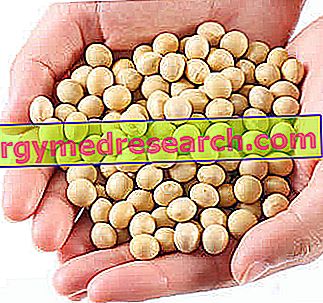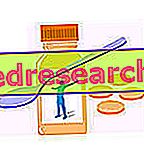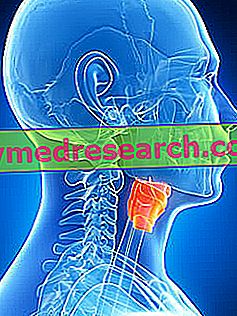Phytoestrogens, or plant estrogens, are natural substances with a similar estrogen activity.

Phytoestrogens are commonly divided into three main classes:
- isoflavones
- Cumestani
- lignans
- (a fourth category, consisting of lactones, has little therapeutic value)
In the plant world they are ubiquitous (present in at least 300 varieties of plants, of which few are edible). Food sources include soy, legumes and, although in smaller quantities, many types of fruit, vegetables and whole grains.
Soy, its derivatives (flour, soy milk, tofu) and red clover, are the main commercial sources of phytoestrogens.
| MAIN CLASSES OF PHYTOOXTROGENS AND THEIR CONTENT IN VEGETABLES | |||||
| ISOFLAVONES | alimony | Cumestani | alimony | lignans | alimony |
| Genistein | soy e derivatives | phytoalexins | beans, sprouts | Enterodiolo | flax seed and sesame |
| daidzein | legumes | 4-metossicumestrolo | carnation nails | enterolactone | soy |
| glycitein | trifolgio | bean sprouts | hop | ||
| Biocanina A | cereals integrals | red clover | fruit and vegetables | ||
| formononetin | sunflower seeds | cereals | |||
All about phytoestrogens
Effects and properties Phytoestrogens and diet Action mechanism Intake dosage Side effects of phytoestrogensSee also
Soy estrogens Soy isoflavones Menopausal dietFunctions and properties
Given the biological conditions, the fields of application of phytoestrogens are many. These substances, in fact, have a dual property: antioxidant on one side and estrogenic on the other (they reduce both the problems due to the lack of estrogens, and those due to their excess).
The nutritional and therapeutic role of foods or dietary supplements rich in phytoestrogens has been investigated, first of all, based on simple epidemiological observations on Asian populations (whose diet is particularly rich in soy). From the examination of these data, and from their comparison with Western counterparts, a lower incidence of menopause-associated disorders, a lower cardiovascular risk, a lower rate of breast, endometrial and ovarian cancers, as well as a lower percentage of osteoporotic hip fractures.
From here, the proposal to use a dietary supplement of phytoestrogens in:
- prevention and treatment of symptoms (hot flushes, dry genitals, wrinkles, hair fragility) and of menopausal-related diseases (natural alternatives to hormone replacement therapy);
- prevention of premenstrual syndrome and aging (thanks to the antioxidant action);
- therapy of mastodynia (neuralgic pain in the breast);
- prevention of cardiovascular diseases (reduction of blood pressure and improvement of lipid structure, ↑ HDL cholesterol ↓ total cholesterol ↓ LDL ↓ triglycerides);
- improvement of bone metabolism;
- antineoplastic potential.
The last point is quite delicate; despite the interest of researchers is high, certainties are still lacking on the possible antitumor activities of phytoestrogens.
Even the favorable action on hot flashes does not seem to have great clinical relevance. On the other hand, the positive effects on the plasma concentration of lipoproteins now seem certain (but it is not yet clear whether the active compounds involved in protecting against cardiovascular risk are isoflavones or other substances contained in soy).
The protective role of phytoestrogens in the appearance of osteoporosis is awaiting clinical confirmation, but already enjoys excellent epidemiological and experimental conditions.
Phytoestrogens: action and diet »



